A Bickford Dollar ... An Interesting So-called Dollar
Sometime around 1874 Dana Bickford, who was a resident of New York City, returned from a trip to Europe. While there he experienced the expense and hassle of having to exchange his money every time he moved from one country to another.
Upon his return, Bickford submitted a proposal for an international coinage to Dr. Henry Linderman who was Director of the U.S. Mint. Linderman was intrigued by the idea because the mint was currently spending half a million dollars a year on recoinage and waste from handling foreign coins. Linderman had some pattern coins struck, dated 1874, which are listed as Judd numbers 1373 to 1378. Congress failed to act on the proposal which killed the idea. This picture is from "Coin Facts."
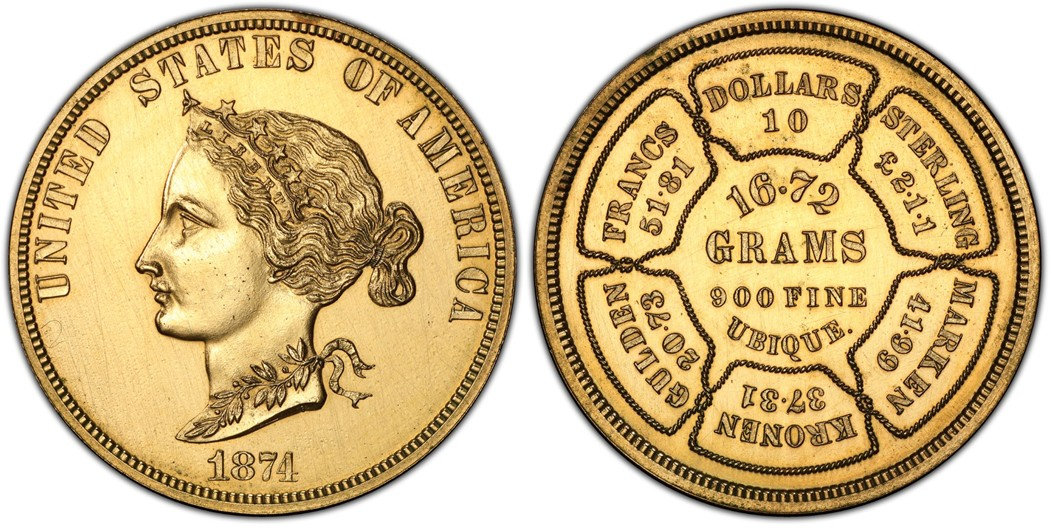
In 1897 Dana Bickford addressed the idea of an international coinage a second time. This time he eight varieties of patterns or “dollars” produced. I found the political aspect of these pieces interesting. Although Bickford did have a couple of pieces made of silver and gold, the collectable varieties are made of aluminum with a brass or copper center. It addressed the bimetallism issue, which had been the core of William Jennings Bryan’s 1896 run for the presidency.
I have never seen so many words on such a small piece. It is not easy to read sentences, even from a photo, so I have provided Bickford’s thoughts and proposals here.
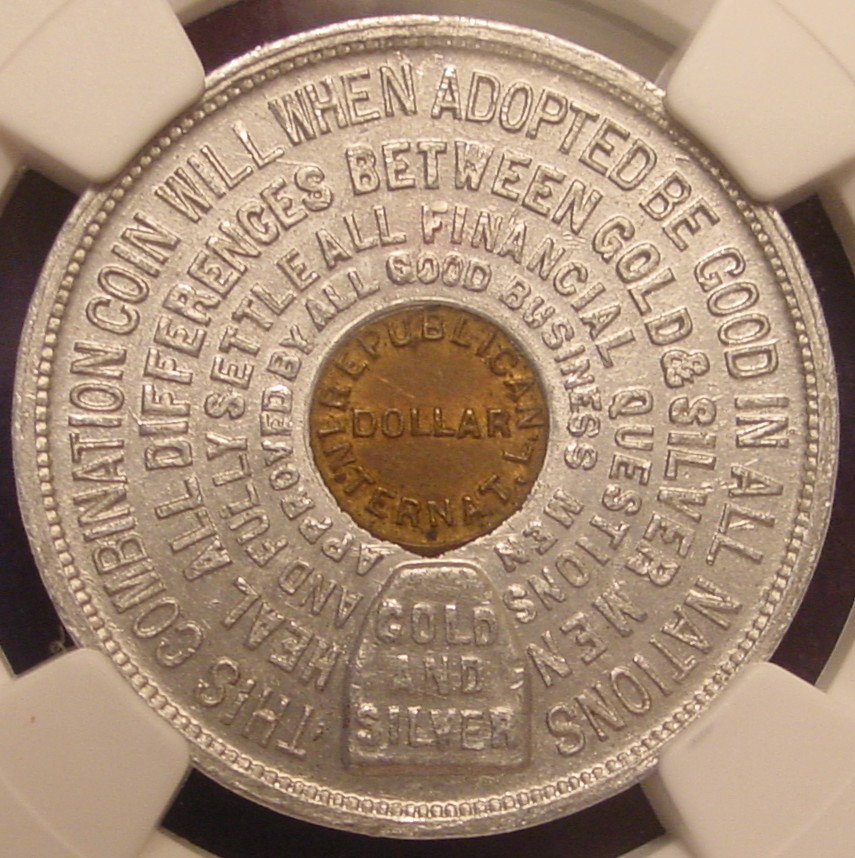
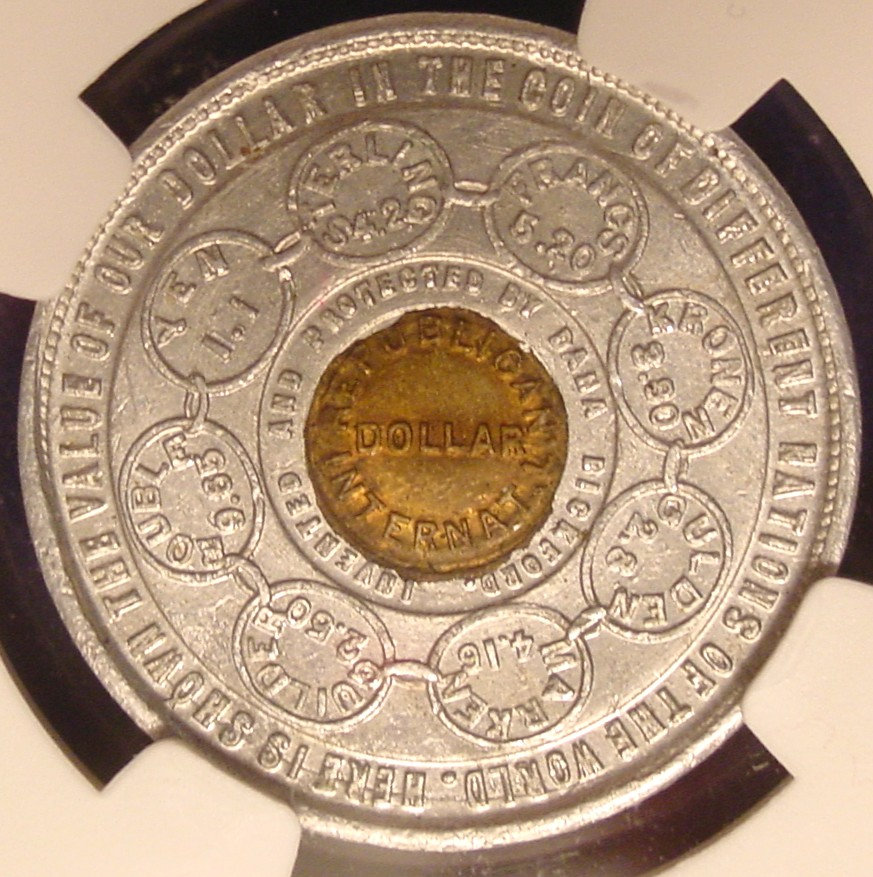
Obverse
This combination coin will when adopted be good in all nations
Heal all differences between gold and silver men
And fully settle all financial questions
Approved by all good business men
“Gold and Silver”
Center in copper: “Republican dollar Internat.l”
Reverse
Here is shown the value of our dollar in the coin of different nations of the world
Sterling 4.2
Francs 5.2
Kronen 3.8
Gulden 2.8
Marken 4.16
Guilder 2.50
Rouble 9.65
Yen 1.1
Invented an protected by Dana Bickford
This is not a scarce variety, and high grade examples are available.
Comments
So it's a bitcoin!
Very cool. I'd love to see the gold/silver version.
--Severian the Lame
The efforts to harmonize currencies is interesting along with the Stella and Trade Dollar. Were there other efforts? It's interesting that we still don't have this today but we do have currency exchange trading.
Did any countries make this with their currency in the middle and others, including the dollar, on the sides?
Cool coin. One was up for auction recently.
Just looked into these a bit more. Here's some interesting info and questions:
https://www.wikitree.com/wiki/Bickford-331
https://www.wikitree.com/wiki/Bickford-348
Thanks for the thread Bill!
Dana Bickford invented an "automatic knitting machine" and he encountered the problems described by BillJones while he was in Europe promoting/selling his invention. I have a small clipped advertisement circa 1880 pertaining to his machines, it seemed like a natural addition to my collection of these interesting SC$'s. the reason why Hibler-Kappen only pictured three medals in their catalogue is because they represent the three design types, the other differences being the different alloy center plug mated with the aluminum outer ring. there are also a few inner/outer ring alloy combinations that were probably prototypes, perhaps unique. I have never seen any of them.
it can be hard to differentiate between the brass and bronze(not copper) center plug, but the bronze seems more common and tends to be darker. I have quite a few in grades ranging from MS62-MS66, all un-holed. I remember buying my first piece at the MSNS Show around 2002-3. Ernie Latter was set-up there and I was shocked to find a dealer with Exonumia. he sold me an un-holed HK-833 grade MS66 by NGC, I still have it. my experience has been that HK-833 is pretty scarce, HK-834/835 almost common and HK-836/837 much tougher to find unholed and in MS grades. also, they can be tough to find without the aluminum outer ring "bleeding" over the inner plug and vice versa.
Bill's pictured medal exhibits some of that strike anomaly.
one interesting medal I found and had graded by NGC was machine grooved around the edge and then fitted with a twisted piece of copper wire that could be attached to a badge. it was for a Park or Monument dedication but the name escapes me now. I can try to post pictures of the ribbon and some medals when I get home this evening.
Thank you for adding additional information about this piece, Keets.
Great info @keets.
Here's some information on Bickford's knitting machine. Since the company is from Vermont, it looks like he could be the one mentioned my earlier post above.
http://www.oldtymestockings.com/sock_machines_american.html
Amazon also has a couple of reprint books by Bickford:
Yes. Saw one on Ebay, but did not go for it. Interested in it because of my bimetallic coin collection.
The pardon is for tyrants. They like to declare pardons on holidays, such as the birthday of the dictator, or Christ, or the Revolution. Dictators should be encouraged to keep it up. And we should be encouraged to remember that the promiscuous dispensation of clemency is not a sign of political liberality. It is instead one of those valuable, identifying marks of tyranny.
Charles Krauthammer
they come to up for sale at eBay rather routinely, Steve Hayden just listed one today. also, if you search in Exonumia with "Bickford" you'll get to what's listed easily if these interest you. about 3-4 of what I call Perpetual Listings by one seller with two ID's, nice medals that go wanting because they are over-priced, have been up at eBay for quite some time. there is also a seller from the Vermont/New England area that must have had a large group of Bickford Dollars, mainly HK-835, that he lists regularly. they are usually MS64-66 and nice medals.
HK-833 un-holed with the insert.
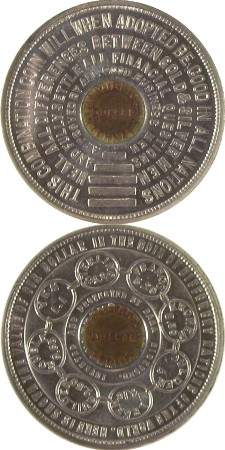
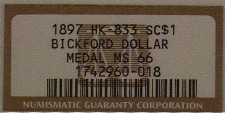
HK-836 with the wire for attaching to a ribbon. I can't seem to locate a picture of the ribbon which was removed to encapsulate the medal.
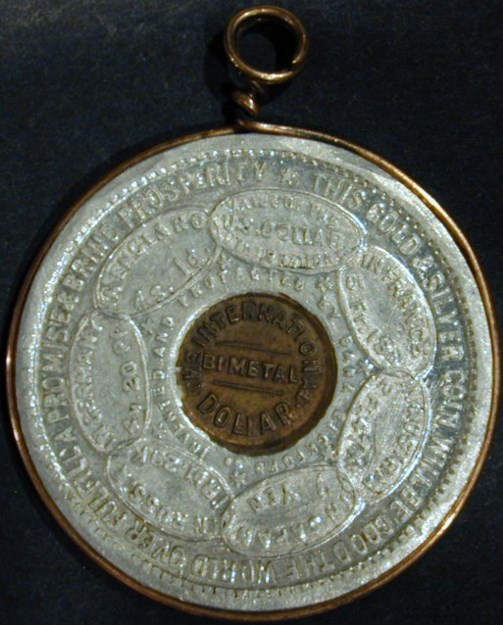
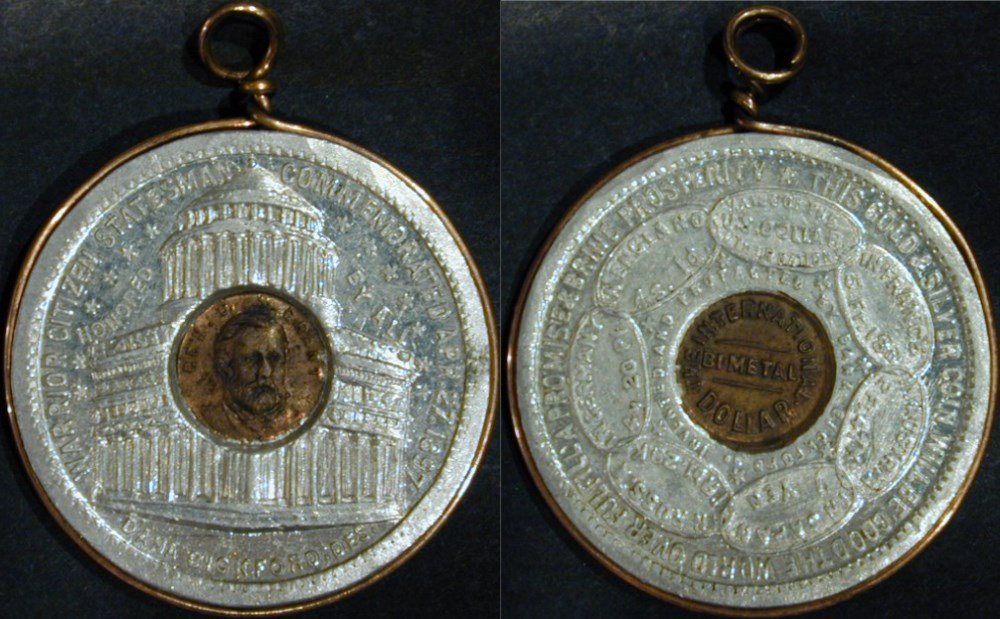
these pictures should interest Bill, they are of a medal from the same era about the Silver lobby and William Jennings Bryan.
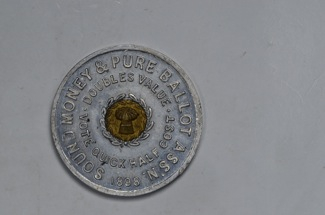
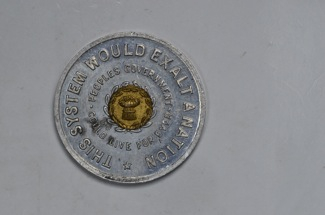
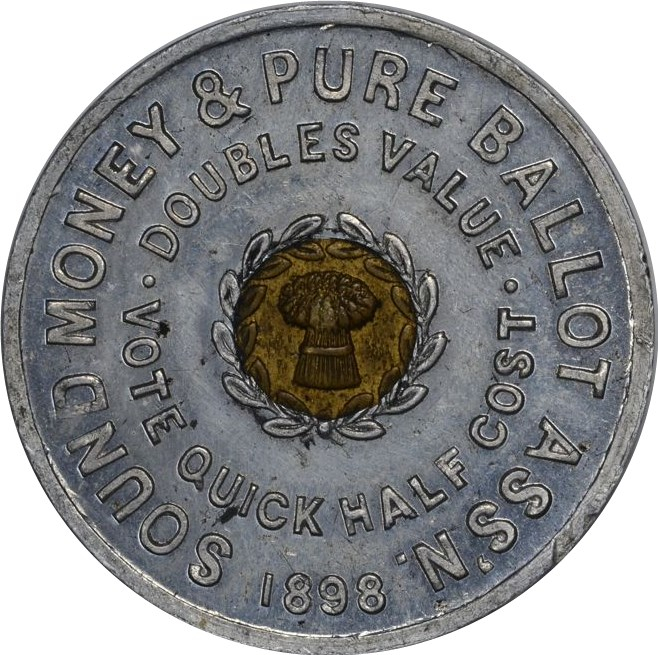
Whenever I can get it in print, there is a lengthy article concerning Bickford and his coin ideas. It is quite different from the usual story.
I like the eagle on the obverse.. rimshot
Very interesting... I was not aware of the attempts to make international coinage... Will have to do some more research on this.... Cheers, RickO
There were many attempts to create coins that were exchangeable at simple ratios. The only successful scheme was the Latin Monetary Union which used identical standards for member countries.
From Wikipedia: the Latin Monetary Union (LMU) an "attempt to unify several European currencies into a single currency that could be used in all the member states" and lasted from 1865 to 1927. The Stella was the US attempt to join the LMU.
Of course, some European countries were eventually successful in moving to a single currency, the Euro, which was adopted in 1995 and introduced to the financial markets in 1999.
It is not well known but there was a Bickford international half dollar
struck at the Philadelphia Mint in 1876. For those interested in this
matter, Gobrecht Journal #127 (September 2016) has the details.